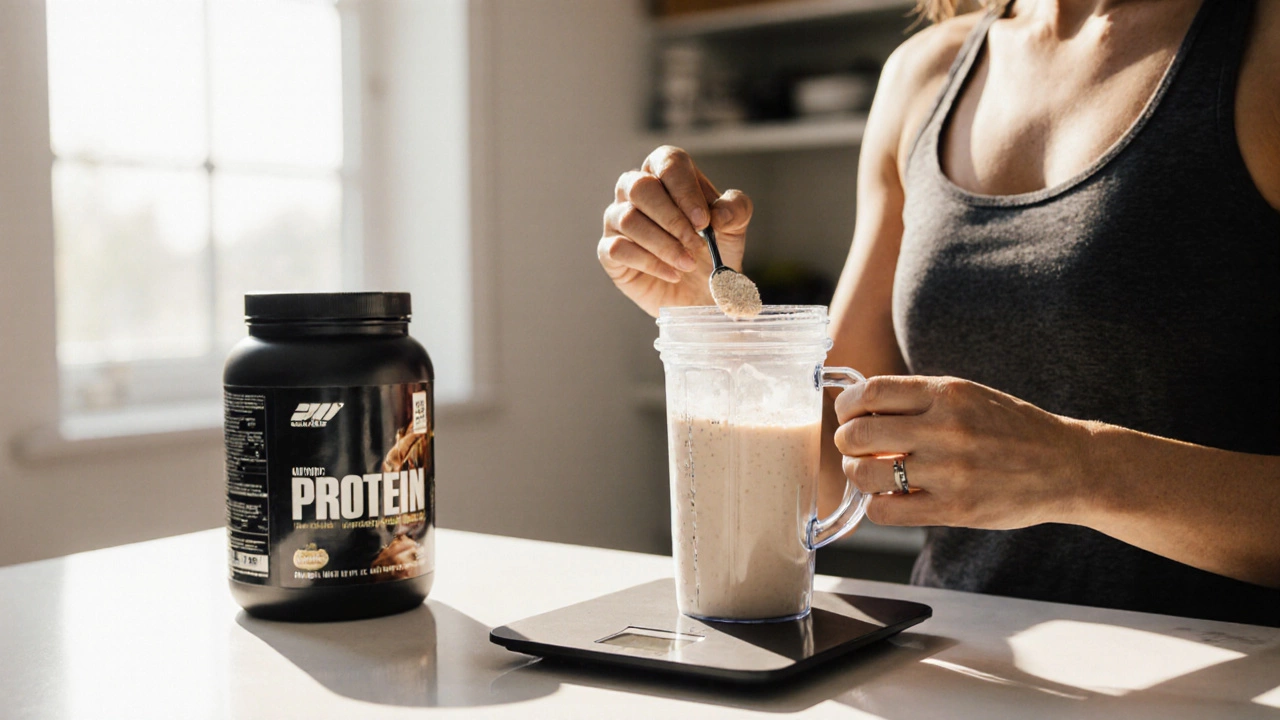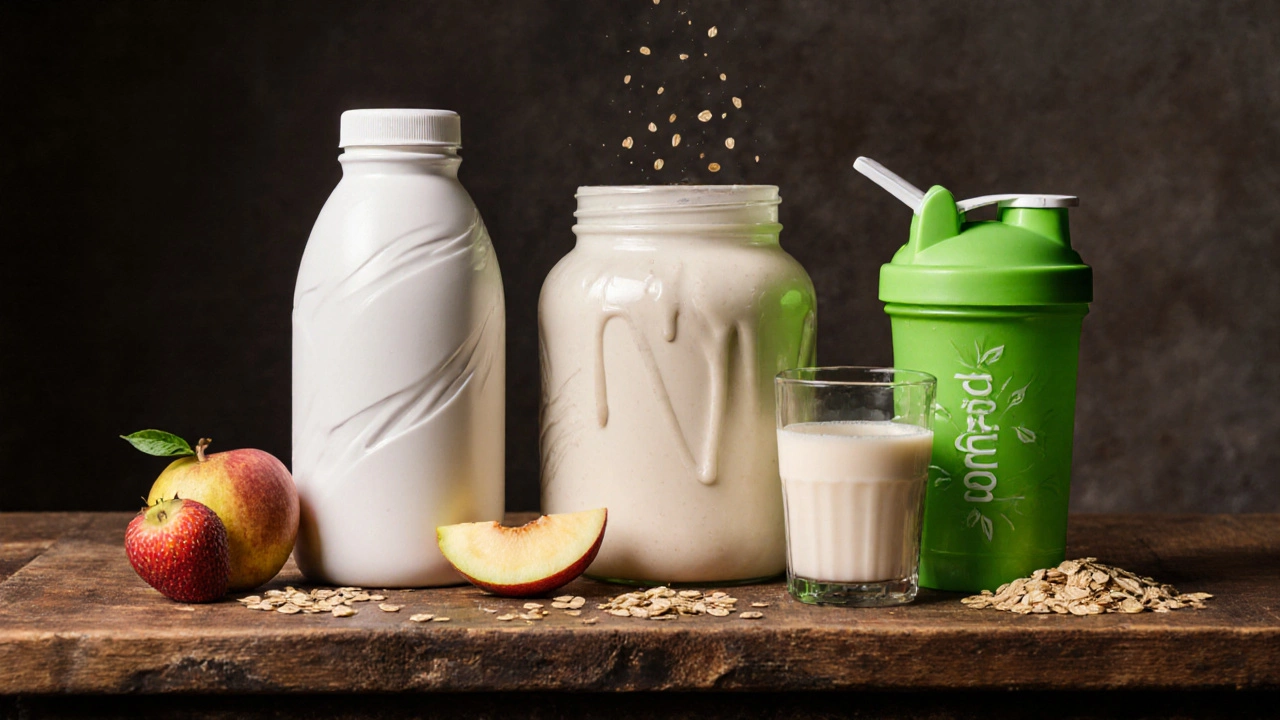
Protein Shake Calculator
Your Information
Your Results
Key Takeaways
- The safe number of protein shakes depends on your total daily protein goal, body weight, and activity level.
- Most adults can comfortably consume 1-2 shakes per day without side effects.
- Choosing the right protein type (whey, casein, plant) matters for timing and digestion.
- Excess protein may stress kidneys only for those with pre‑existing conditions.
- Monitor overall diet - shakes should supplement, not replace, whole‑food protein sources.
When we talk about protein shake is a liquid supplement made from concentrated protein powders, mixed with water, milk, or a plant‑based beverage, intended to boost daily protein intake, the question isn’t just about taste - it’s about how it fits into your nutrition plan.
What Your Body Actually Needs
Understanding the baseline is the first step. Daily protein requirement refers to the amount of protein your body needs to repair tissues, build muscle, and support metabolic functions. The general guideline for active adults is 1.2-2.0g per kilogram of body weight per day. For a 75kg (165lb) person, that’s roughly 90-150g of protein.
Most whole foods provide about 20-30g of protein per serving (e.g., a chicken breast, a cup of Greek yogurt, or a cup of lentils). When you add a shake that delivers 20‑30g, you’re simply topping up the gap.
Types of Protein Shakes and Their Best Uses
Not all shakes are created equal. Here’s a quick rundown of the three main categories:
- Whey protein is a fast‑digesting dairy‑derived protein, rich in branched‑chain amino acids (BCAAs) that jump‑start muscle recovery. Ideal right after resistance training.
- Casein protein digests slowly, feeding muscles for up to 7hours. Perfect before bedtime or during long periods without food.
- Plant protein blends (pea, rice, hemp) offer a dairy‑free alternative. They’re slightly slower than whey but still effective for most people.
| Protein Type | Digestion Speed | BCAA Content | Best Timing | Typical Cost (USD per 30‑serving tub) |
|---|---|---|---|---|
| Whey | Fast (30‑60 min) | High | Post‑workout | $30-$45 |
| Casein | Slow (5‑7 hrs) | Moderate | Before bed | $35-$50 |
| Plant Blend | Medium (60‑90 min) | Varies | Anytime | $25-$40 |

Calculating a Safe Number of Shakes
Here’s a simple step‑by‑step way to decide how many shakes are OK for you:
- Figure out your total protein goal using the 1.2‑2.0g/kg rule.
- Log the protein you already get from meals (use a nutrition app or label reading).
- Subtract meal protein from the goal - the remainder is what you could fill with shakes.
- Divide that remainder by the protein per shake (usually 20‑30g). The result is the maximum number of shakes.
Example: A 68‑kg (150‑lb) person aims for 120g/day.
- Breakfast=25g, Lunch=30g, Dinner=35g → 90g total.
- Remaining need=30g.
- One whey shake provides 25g → 1 shake covers the gap.
When More Than Two Shakes Might Be Needed
High‑performance athletes or bodybuilders on bulking phases sometimes target the upper end of the protein range (2.2g/kg) and also eat multiple small meals. In those cases, 2‑3 shakes can fit comfortably, especially if they’re spreading protein intake every 3‑4hours.
However, the key is to keep total protein protein shakes within the overall daily limit and ensure you’re still consuming micronutrients from whole foods.
Potential Risks of Over‑Consuming Protein Shakes
While most healthy adults tolerate high protein intakes, there are a few caveats:
- Kidney health concerns arise mainly for people with pre‑existing renal disease; excess protein can increase glomerular pressure.
- Very high protein can displace other nutrients, leading to insufficient fiber, vitamins, and minerals.
- Some shakes contain added sugars, artificial sweeteners, or heavy metals; choose reputable brands with third‑party testing.

Practical Tips to Get the Most Out of Your Shakes
- Blend with water or unsweetened almond milk to keep calories low.
- Add fruit or oats for extra carbs if you need post‑workout recovery.
- Rotate flavors to avoid taste fatigue and keep nutrition varied.
- Store powder in a cool, dry place to maintain quality.
- Watch the label: Aim for ≤5g of added sugar per serving.
Bottom Line
For most people, 1‑2 protein shakes a day are enough to hit protein goals without overloading the system. Adjust upward only if you’re a serious athlete, have a high body‑weight target, or find it hard to meet protein needs through food alone. Always balance shakes with a varied diet and stay mindful of any underlying health conditions.
Frequently Asked Questions
Can I drink a protein shake on an empty stomach?
Yes. A fast‑digesting whey shake on an empty stomach quickly supplies amino acids, which can be useful before a morning workout. Just pair it with a small carb source if you feel light‑headed.
Is it safe to have a shake every day?
For healthy adults, a daily shake is safe as long as total protein stays within recommended limits and you’re not relying solely on powders for nutrition.
Do plant‑based protein shakes work as well as whey?
They can, especially if the blend includes a complete amino‑acid profile (pea + rice). However, whey typically has slightly higher leucine, which is key for muscle synthesis.
What’s the worst thing about drinking too many shakes?
Excess protein can stress kidneys in susceptible individuals, and high‑sugar formulas add unnecessary calories, potentially leading to weight gain.
Should I take a shake before or after a workout?
Post‑workout is generally best for muscle repair. If you’ve fasted for several hours, a pre‑workout shake can also provide energy.
How many grams of protein does a typical shake contain?
Most standard scoops deliver 20‑30g of protein. Some specialty formulas may go as high as 40g.
